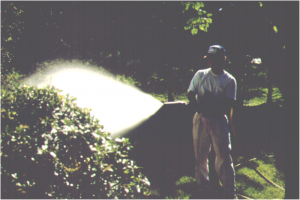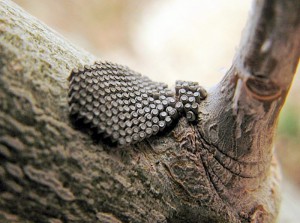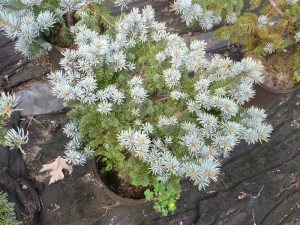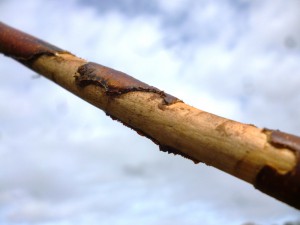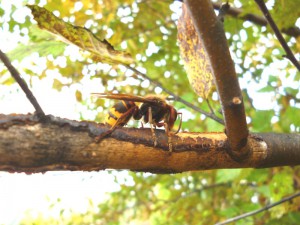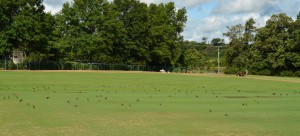In New Jersey, dormant oils (3-4%) are typically applied during March & April. However, many landscapers also apply dormant oils during the late fall months. Dormant oils have proven to be an effective material against a wide range of insect/mite pests & their eggs. Typical landscape pests targeted include spruce spider mites/eggs, southern red spider mites/eggs, oak spider mite eggs, aphid eggs, soft scales, armored scales (to a lesser degree), hemlock rust mites, spruce gall adelgids, lace bugs (deciduous plants), cankerworm eggs, psyllids, plant bugs, etc.
Landscape, Ornamentals, Nursery, and Turf Edition
Seasonal updates on ornamental, nursery, and turf pests.
Subscriptions are available via EMAIL and RSS.
Companion Website Links:
 Rutgers Turf Blog - Articles on turfgrass diseases and cultural practices for the commercial turfgrass industry. Subscription available via RSS.
Rutgers Turf Blog - Articles on turfgrass diseases and cultural practices for the commercial turfgrass industry. Subscription available via RSS.
 Rutgers Weather Forecasting - Meteorological Information important to commercial agriculture.
Rutgers Weather Forecasting - Meteorological Information important to commercial agriculture.
Why Do Spruce Trees Show Interior Needle Discoloration?
Occasionally, observations of White Spruce (Picea glauca) or Colorado Spruce (Picea pungens) within landscapes, nurseries, & Christmas tree farms will show current needle growth having a blue or blue-green color, but with older, inner needles having lost the desirable color and turning pale or even yellow. Although sometimes seen on Norway Spruce, these symptoms are most common on the White & Colorado Spruce species. Sometimes symptoms can become dramatic and initiate both aesthetic and plant health concerns. Although the reasons for such symptoms can be from a complex number of conditions, a compromised root system is typically the underlying cause.
European Hornet: The Mysterious Branch Girdler
During the later weeks of summer & early weeks of fall the mysterious removal of bark sections typically found on branches of Birch, Rhododendron, and Lilac can sometimes be observed. These girdled or stripped bark sections are probably being done by European Hornets. These vespids have been reported to potentially have a worse temperament than timber rattle snakes.
[Read more…]
Alert: Disaster Preparedness for Production Agriculture
Governor Chris Christie today declared a state of emergency throughout the state as a result of severe weather conditions expected in the coming days. The National Weather Service is forecasting a dangerous nor’easter weather pattern impacting New Jersey beginning on October 1, 2015, including high winds, very heavy rain, inland river flooding, as well as major coastal flooding with heavy surf and beach erosion. The National Hurricane Center currently has forecasted the track for the impending weather event Joaquin, now a major hurricane, showing it moving northward off the mid-Atlantic coast late on or about October 4, 2015, which may cause significant flooding, dangerous storm surges between eight and ten feet, substantial wind damage, and stream and river flooding threatening homes and other structures, and endangering lives in the State.
ReadyAG Can Help Plan and Prepare
ReadyAG Workbook
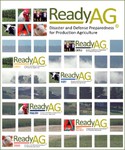 Just as we’ve finished National Preparedness Month, Governor Christie has declared a state of emergency. In case Hurricane Joaquin takes a turn toward the Jersey Shore this weekend, there are many resources and tools to help get your families and homes prepared. Make sure your farm business is ready too.
Just as we’ve finished National Preparedness Month, Governor Christie has declared a state of emergency. In case Hurricane Joaquin takes a turn toward the Jersey Shore this weekend, there are many resources and tools to help get your families and homes prepared. Make sure your farm business is ready too.
[Read more…]
Update on Ag Worker Protection Standard
A pre-publication version of the Ag Worker Protection Standard Revisions has been posted on the EPA’s website. In addition, a document comparing new protections to existing protections is available. Per Nancy Fitz, US EPA – Office of Pesticide Programs, compliance with most of the new standards will be required in mid-December 2016. Thanks to Pat Hastings, Rutgers NJAES Pesticide Safety Education Program Coordinator, for the heads-up.
Agricultural Worker Protection Standard Revisions (314pp, 880K)
Better Late Than Never
Today’s rain got me thinking about insect damage in turfgrass. Actually I’ve been thinking about insect damage in turf for a week or so, ever since I saw a flock of birds pecking sod webworms out of the bentgrass plots behind the Plant Diagnostic Laboratory.
